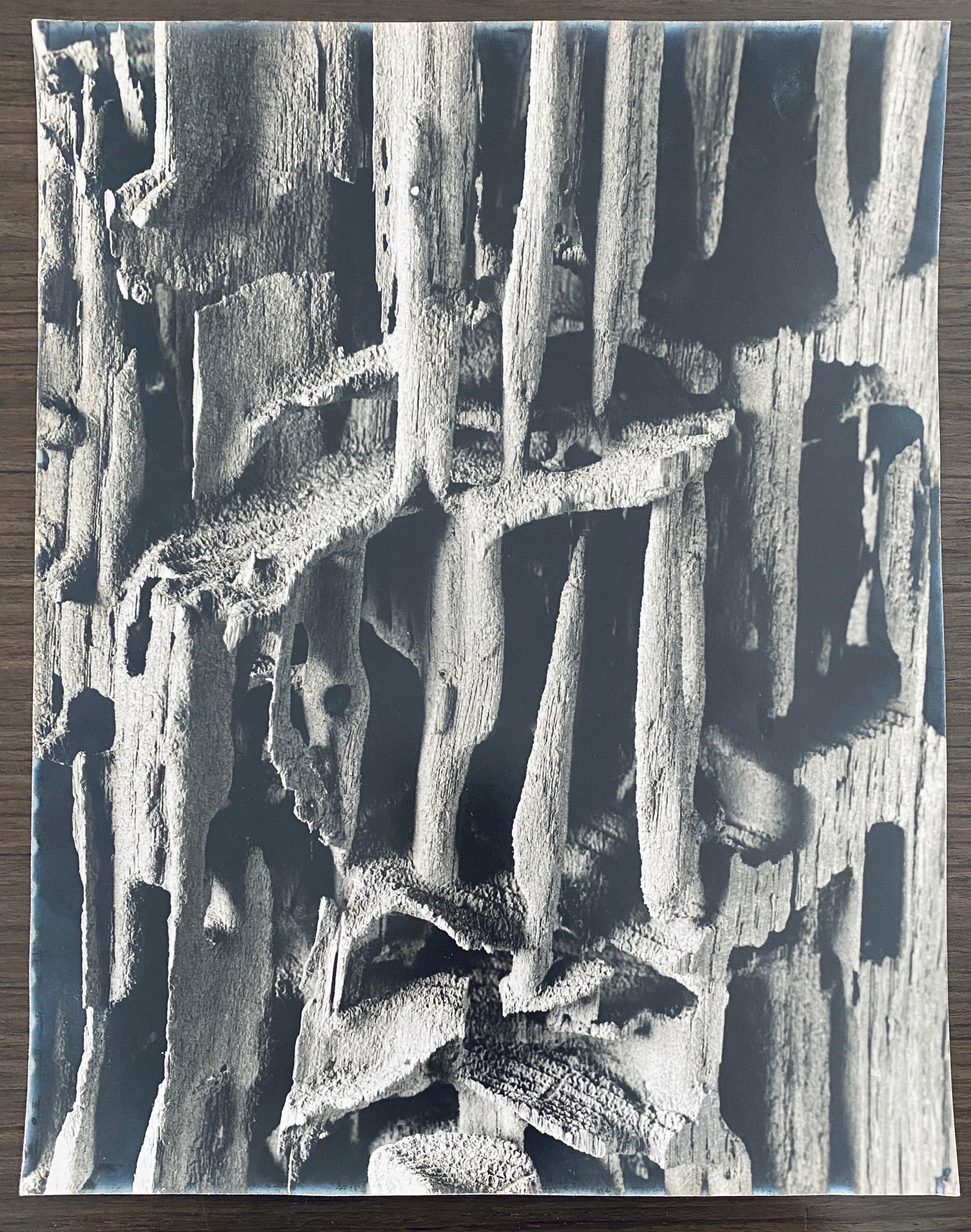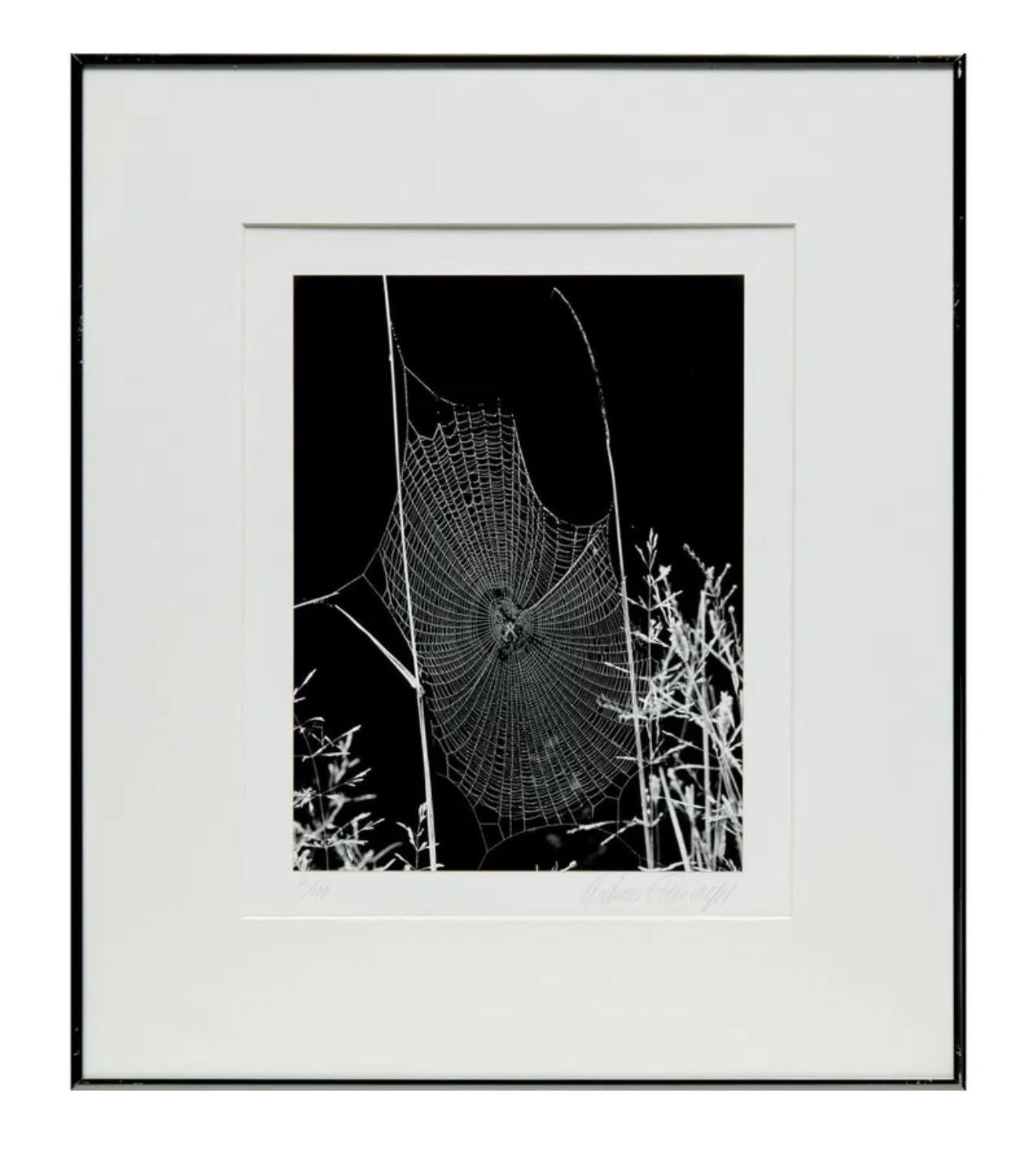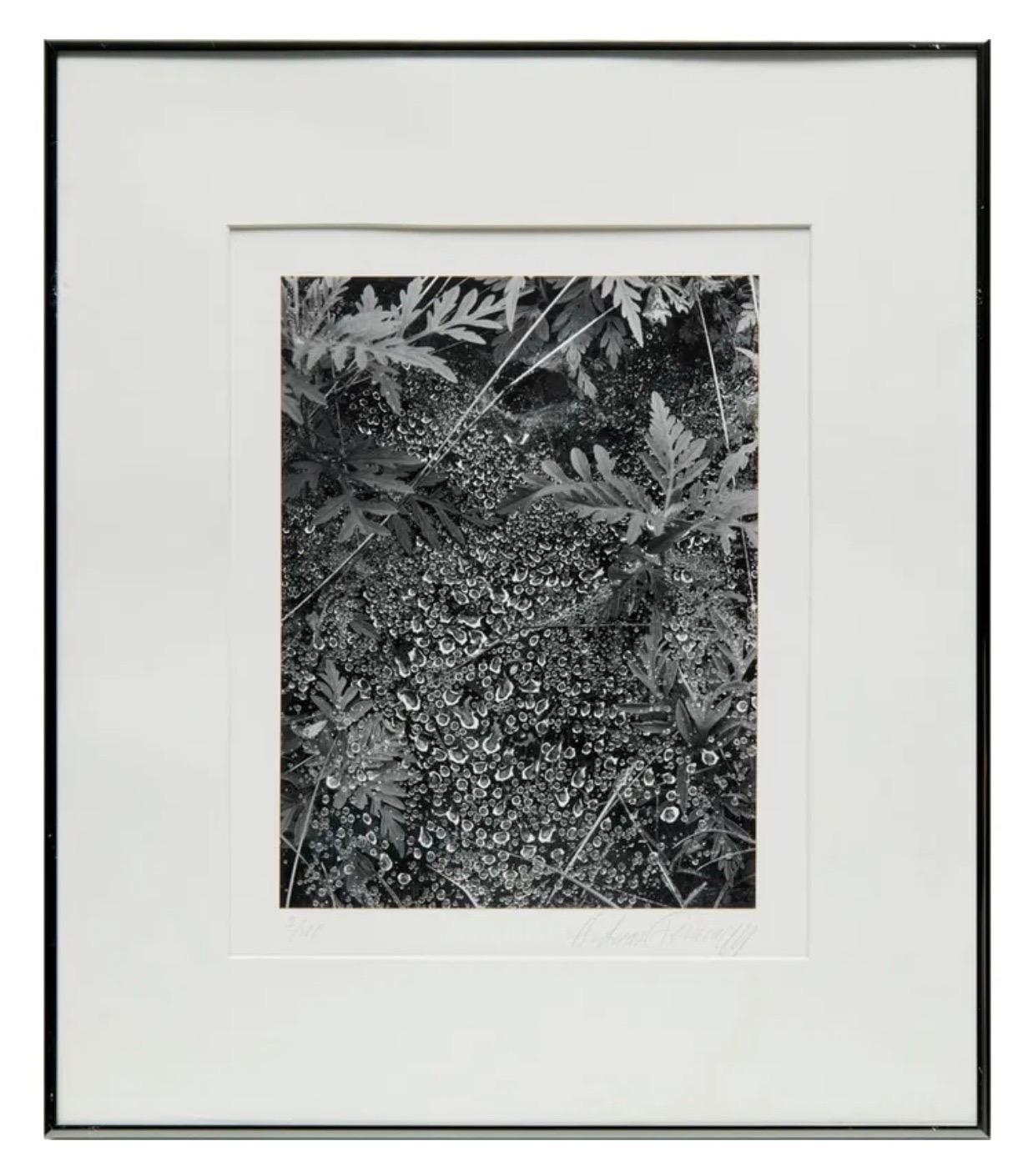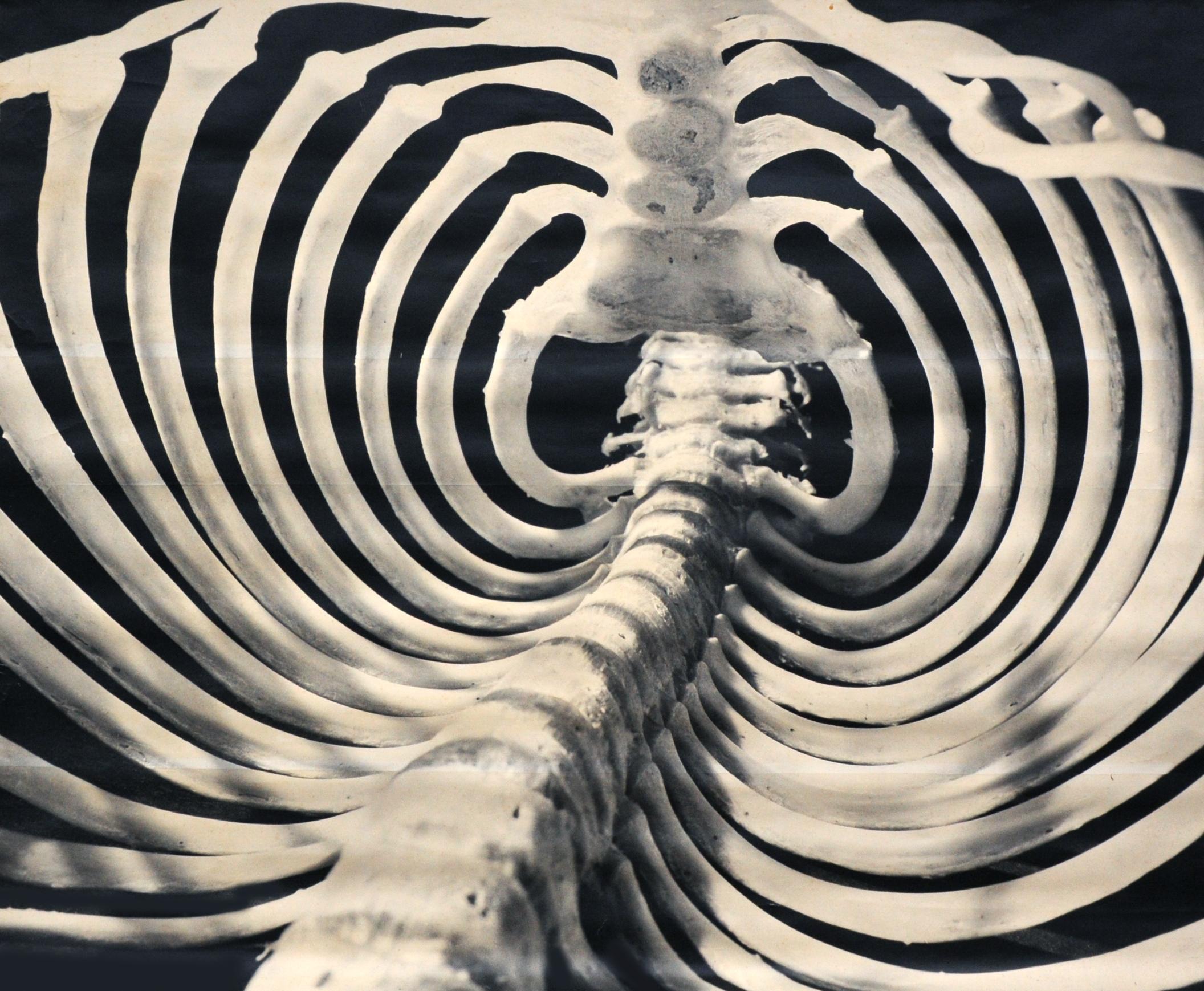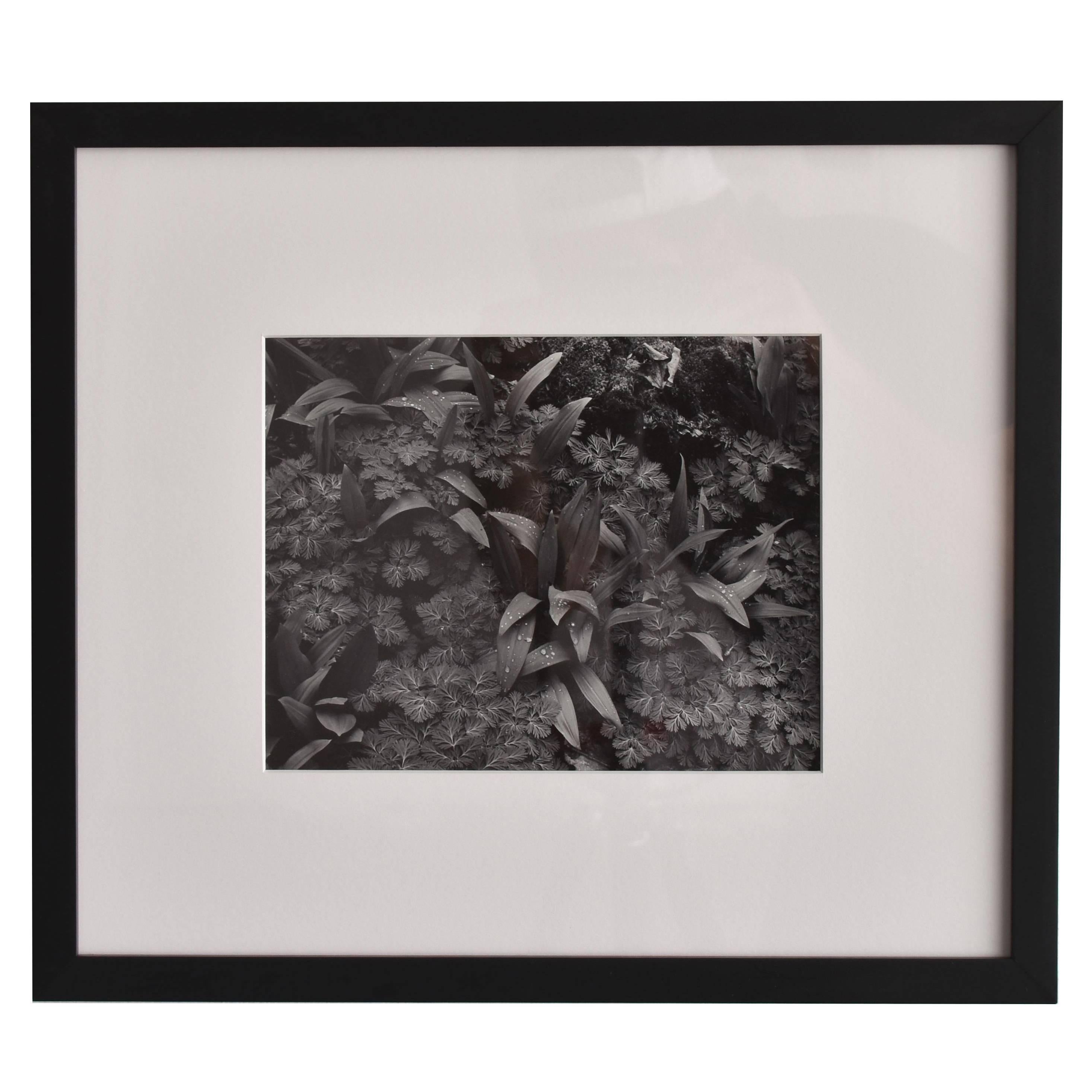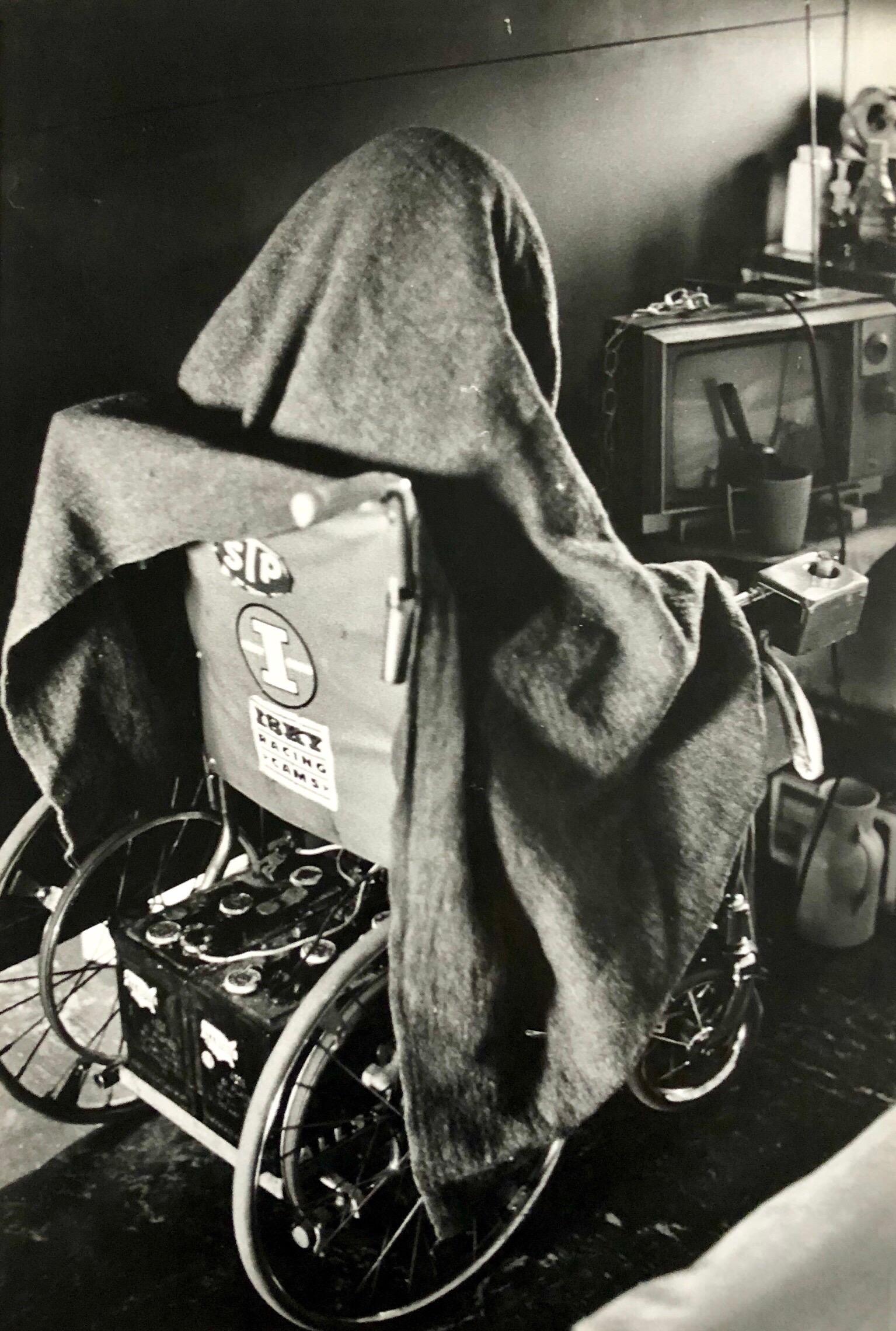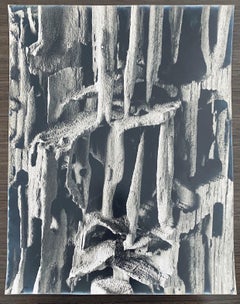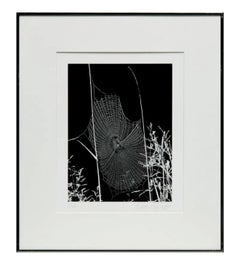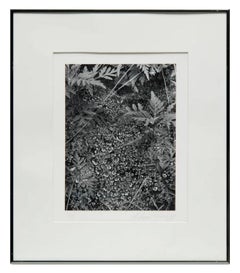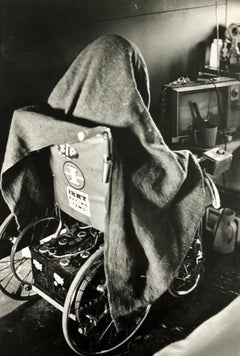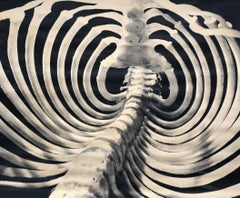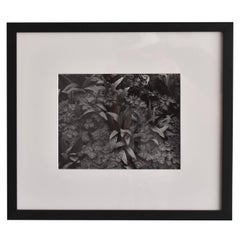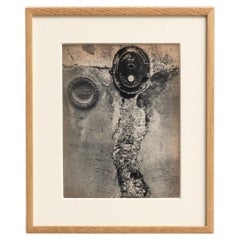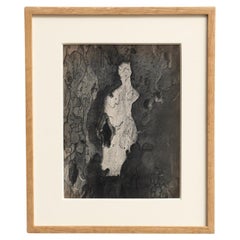Items Similar to American Photographer Nest Silver Gelatin Vintage Print
Want more images or videos?
Request additional images or videos from the seller
1 of 9
Andreas FeiningerAmerican Photographer Nest Silver Gelatin Vintage Print
$4,000
£3,035.11
€3,470.37
CA$5,586.92
A$6,211.89
CHF 3,243.51
MX$75,613.82
NOK 41,385.72
SEK 38,776.45
DKK 25,900.04
Shipping
Retrieving quote...The 1stDibs Promise:
Authenticity Guarantee,
Money-Back Guarantee,
24-Hour Cancellation
About the Item
Andreas Bernhard Lyonel Feininger (December 27, 1906 – February 18, 1999) was an American photographer and a writer on photographic technique. He was noted for his dynamic black-and-white scenes of Manhattan and for studies of the structures of natural objects.
Feininger was born in Paris, France, the eldest son of Julia Berg, a German Jew, and the American painter and art educator Lyonel Feininger (1871-1956). His paternal grandparents were the German violinist Karl Feininger (1844–1922) and the American singer Elizabeth Feininger, (née Lutz), who was also of German descent. His younger brother was the painter and photographer T. Lux Feininger (1910–2011).
In 1908 the Feininger family moved to Berlin, and in 1919 to Weimar, where Lyonel Feininger took up the post of Master of the Printing Workshop at the newly formed Bauhaus art school.
Andreas left school at 16, in 1922, to study at the Bauhaus; he graduated as a cabinetmaker in April 1925. After that he studied architecture, initially at the Staatliche Bauschule Weimar (State Architectural College, Weimar) and later at the Staatliche Bauschule Zerbst. (Zerbst is a city in the German state of Saxony-Anhalt, about 20 km from Dessau, where the Bauhaus moved to in 1926.) The Feininger family moved to Dessau with the Bauhaus. In addition to continuing his architectural studies in Zerbst, Andreas developed an interest in photography and was given guidance by neighbour and Bauhaus teacher László Moholy-Nagy.
In 1936, he gave up architecture and moved to Sweden, where he focused on photography. In advance of World War II, in 1939, Feininger immigrated to the U.S. where he established himself as a freelance photographer. In 1943 he joined the staff of Life magazine, an association that lasted until 1962.
Feininger became famous for his photographs of New York. Other frequent subjects among his works were science and nature, as seen in bones, shells, plants, and minerals in the images of which he often stressed their structure. Rarely did he photograph people or make portraits.
Feininger wrote comprehensive manuals about photography, of which the best known is The Complete Photographer. In the introduction to one of Feininger's books of photographs, Ralph Hattersley, the editor of the photography journal Infinity, described him as "one of the great architects who helped create photography as we know it today." In 1966, the American Society of Media Photographers (ASMP) awarded Feininger its highest distinction, the Robert Leavitt Award. In 1991, the International Center of Photography awarded Feininger the Infinity Lifetime Achievement Award.
Today, Feininger's photographs are in the permanent collections of the Center for Creative Photography, the Museum of Modern Art, the Metropolitan Museum of Art, the National Gallery of Art, London's Victoria and Albert Museum, and the George Eastman House in Rochester, New York.
- Creator:Andreas Feininger (1906-1999, American)
- Dimensions:Height: 13.5 in (34.29 cm)Width: 10.5 in (26.67 cm)
- Medium:
- Period:
- Condition:minor wear to edges. Please see Photos.
- Gallery Location:Surfside, FL
- Reference Number:1stDibs: LU38215180112
About the Seller
4.9
Platinum Seller
Premium sellers with a 4.7+ rating and 24-hour response times
Established in 1995
1stDibs seller since 2014
1,784 sales on 1stDibs
Typical response time: <1 hour
- ShippingRetrieving quote...Shipping from: Surfside, FL
- Return Policy
Authenticity Guarantee
In the unlikely event there’s an issue with an item’s authenticity, contact us within 1 year for a full refund. DetailsMoney-Back Guarantee
If your item is not as described, is damaged in transit, or does not arrive, contact us within 7 days for a full refund. Details24-Hour Cancellation
You have a 24-hour grace period in which to reconsider your purchase, with no questions asked.Vetted Professional Sellers
Our world-class sellers must adhere to strict standards for service and quality, maintaining the integrity of our listings.Price-Match Guarantee
If you find that a seller listed the same item for a lower price elsewhere, we’ll match it.Trusted Global Delivery
Our best-in-class carrier network provides specialized shipping options worldwide, including custom delivery.More From This Seller
View AllAmerican Photographer Nature Silver Gelatin Vintage Print
By Andreas Feininger
Located in Surfside, FL
Andreas Bernhard Lyonel Feininger (December 27, 1906 – February 18, 1999) was an American photographer and a writer on photographic technique. He was noted for his dynamic black-and-...
Category
Mid-20th Century Black and White Photography
Materials
Silver Gelatin
American Photographer Andreas Feininger Silver Gelatin Vintage Print
By Andreas Feininger
Located in Surfside, FL
Andreas Feininger (American, 1906-1999),
Untitled, nature subject
Spider web
silver gelatin prints
Hand signed in pencil "Andreas Feininger"
numbered "2/100"
Dimensions: 12.25"h x...
Category
Mid-20th Century Black and White Photography
Materials
Silver Gelatin
American Photographer Andreas Feininger Silver Gelatin Vintage Print
By Andreas Feininger
Located in Surfside, FL
Andreas Feininger (American, 1906-1999),
Untitled, nature subject
Morning dew
silver gelatin prints
Hand signed in pencil "Andreas Feininger"
numbered "2/100"
Dimensions: 12.25"h ...
Category
Mid-20th Century Black and White Photography
Materials
Silver Gelatin
Large Vintage Print Silver Gelatin Signed Photograph Terminal Patient Bird Cover
By Fred McDarrah
Located in Surfside, FL
Man in Wheel Chair , Titled Terminal patient, Bird Cover
Over a 50-year span, McDarrah documented the rise of the Beat Generation, the city’s postmodern art movement, its off-off-B...
Category
20th Century American Modern Black and White Photography
Materials
Black and White, Silver Gelatin
Vintage Silver Gelatin Photograph Surrealist Doll Art Photo, Jazz Photographer
Located in Surfside, FL
These were from a show of her work. Influenced by Surrealism and Dada Photographs
these are images of old children's dolls in various states of decay. These bear the influence of Ha...
Category
20th Century Surrealist Black and White Photography
Materials
Silver Gelatin
Vintage Silver Gelatin Print Photograph Marcus Leatherdale Shrouded Figure Photo
Located in Surfside, FL
Marcus Leatherdale (1952 - 2022)
Silver gelatin print with copper leaf mount
1987
Titled: High Priest. From the Demigod series.
Hand signed and dated and bears artist studio stamp verso.
Provenance: Greathouse Gallery (with label & information verso)
Edition: 1 of 10.
Dimensions mage measures 12" x 5", total measurements are 24" x 13"
Marcus Leatherdale was a Canadian portrait photographer.
Marcus Andrew Leatherdale was born on 18 September 1952, in Montreal, Canada, to Jack Leatherdale, a veterinarian, and Grace Leatherdale, a homemaker. He attended the San Francisco Art Institute.
Leatherdale arrived in New York City in 1978, where he attended the School of Visual Arts. started his career in New York City during the early eighties, setting up a studio on Grand Street.
Leatherdale first served as Robert Mapplethorpe office manager for a while and was photographed in the nude by the master, grabbing a rope with his right hand and holding a rabbit in his left.
Thereafter he worked as an assistant curator to Sam Wagstaff. He soon became a darling of the then vibrant club scene and the fashionable media: Interview, Details, The New Yorker, Vanity Fair, and Elle Decor presented his work. Later on he was featured in artsy publications as Artforum, Art News, and Art in America. Leatherdale was the Cecil Beaton of downtown New York,
He photographed a not-yet-famous club kid named Madonna in her ripped jeans and his denim vest. The performance artist Leigh Bowery was majestic in a tinseled mask, a corset and a merkin. Andy Warhol was a Hamlet in a black turtleneck. Susanne Bartsch, the nightlife impressaria, was a towering presence in red leather. He documented the New York City lifestyle, the extraordinary people of Danceteria and Club 57 where he staged his first exhibits in 1980. Leatherdale was an acute observer of the New York City of the nineteen eighties. His models were the unknown but exceptional ones – like Larissa, Claudia Summers or Ruby Zebra – or well known artists – like Madonna, Keith Haring, Andy Warhol, Winston Tong and Divine, Trisha Brown, Lisa Lyon, Andrée Putman, Kathy Acker and Sydney Biddle Barrows, otherwise known as the Mayflower Madam, Jodie Foster, and fellow photographer John Dugdale. He Married Claudia Summers, theirs was not a traditional marriage, but they were best friends, and he was Canadian, so it made life easier if they wed. His boyfriend for a time was Robert Mapplethorpe, whose photography studio Mr. Leatherdale also managed. He and Mapplethorpe were a striking pair, dressed like twins in leather and denim, their faces as if painted by Caravaggio, and they often photographed each other.
Jean-Michel Basquiat was often hanging out there, playing his bongo drums; so were friends like Cookie Mueller, the doomed, gimlet-eyed author and Details magazine contributor who was for a time Mapplethorpe’s and Ms. Summers’ drug dealer, and Kathy Acker, the performance artist and novelist. For quite a while Leatherdale remained in Mapplethorpe's shadow, but was soon discovered as a creative force in his own right by Christian Michelides, the founder of Molotov Art Gallery in Vienna. Leatherdale flew to Vienna, presented his work there and was acclaimed by public and press.
This international recognition paved his way to museums and permanent collections such as the Rheinisches Landesmuseum Bonn, the Art Institute of Chicago, the Australian National Gallery in Canberra, the London Museum in London, Ontario, and Austria's Albertina. He was included in the MoMA exhibit New York/New Wave along with Kenny Scharf, William Burroughs, John Crash Matos, Larry Clark, Nan Goldin, Lawrence Weiner and Stephen Sprouse. Above all, his arresting portraits of New York City celebrities in the series Hidden Identities aroused long-lasting interest amongst curators and collectors.
In 1993, Leatherdale began spending half of each year in India's holy city of Banaras. Based in an ancient house in the centre of the old city, he began photographing the diverse and remarkable people there, from the holy men to celebrities, from royalty to tribals, carefully negotiating his way among some of India's most elusive figures to make his portraits. From the outset, his intention was to pay homage to the timeless spirit of India through a highly specific portrayal of its individuals. His pictures include princesses and boatmen, movie stars and circus performers, and street beggars and bishops, mothers and children in traditional garb. Leatherdale explored how essentially unaffected much of the country was by the passage of time; and it has been remarked upon that this approach is distinctly post-colonial. In 1999, Leatherdale relocated to Chotanagpur (Jharkhand) where he focusing upon the Adivasis. Later Serra da Estrela in the mountains of central Portugal became his second home base.
Leatherdale's matte printing techniques, which adapt nineteenth-century processes and employ half black, half sepia colorations, reinforce the timelessness of his subjects. Tones and matte surfaces effectively differentiate his portraits from the easy slickness of fashion photography.
In 2019, Mr. Leatherdale compiled his work from 80s in a book entitled “Out of the Shadows”, written with Claudia Summers.
During his time in New York City, he dated Robert Mapplethorpe, whose photography studio Leatherdale managed. His partner of two decades, Jorge Serio, died in July 2021
Major exhibitions
1980 Urban Women, Club 57, NYC
1980 Danceteria, NYC
1981 Stilvende, NYC
1982 The Clock Tower, PS1, NYC
1982 544 Natoma Gallery, San Francisco
1982 Eiko And Koma, Stilvende, NYC
1983 Form And Function Gallery, Atlanta
1983 Galerie in der GGK Wien, Vienna, Austria
1983 The Ring, Vienna (organized by Molotov)
1983 London Regional Art Gallery, London, Ontario, Canada
1984 Performance, Greathouse Gallery, NYC
1984 Social Segments, Grey Art Gallery, NYU
1984 Rheinisches Landesmuseum, Bonn
1985 Ritual, Greathouse Gallery, NYC
1985 Artinzer, Munich
1985 Leatherdale/Noguchi, Gallery 291, Atlanta
1985 Paul Cava Gallery, Philadelphia
1986 Poison Ivy, Greathouse Gallery, NYC
1986 Wessel O’Connor Gallery, Rome
1986 Hidden Identities, Michael Todd Gallery, Palladium, NYC
1987 Demigods, Greathouse Gallery, NYC
1987 Collier Gallery, Scottsdale, Arizona
1987 Tunnel Gallery, NYC
1988 Claus Runkel Fine Art Ltd., London, UK
1988 Madison Art Center, Madison
1989 Wessel-O’Connor Gallery, NYC
1989 Summer Night Festival, Onikoube, Sendai
1990 Bent Sikkema Fine Art, NYC
1990 Fahey-Klein Gallery, Los Angeles
1990 Faye Gold Gallery, Atlanta
1990 Mayan Theatre, Los Angeles
1991 Runkel Hue-Williams Gallery, London
1991 Galerie Michael Neumann, Düsseldorf
1991 Arthur Rogers Gallery, New Orleans
1992 Arthur Rogers, NYC
1992 Galerie Del Conte, Milwaukee
1993 Galerie Bardamu, NYC
1996 Fayf Gold Gallery, Atlanta
1996, 1997, 1998, 1999 Bridgewater/Lustberg, NYC
1998 Rai Krishna Das...
Category
1980s 85 New Wave Black and White Photography
Materials
Silver Gelatin
You May Also Like
Andreas Feininger Monumental B&W Photograph, 1951
By Andreas Feininger
Located in Washington, DC
Large and wonderful B & W photograph by American photographer Andreas Feininger (1906-1999). Photograph is of a gorilla rib cage. Printed in 1951, it measures 8ft. 10 in. x 10ft. Photograph is attached to linen and can be rolled for easy storage and shipping.
Feininger was born in Paris, France, the eldest son of Julia Berg, a German Jew, and the American painter and art educator Lyonel Feininger (1871-1956). His paternal grandparents were the German violinist Karl Feininger (1844–1922) and the American singer Elizabeth Feininger, (née Lutz), who was also of German descent. His younger brother was the painter and photographer T. Lux Feininger (1910–2011)
In 1908 the Feininger family moved to Berlin, and in 1919 to Weimar, where Lyonel Feininger took up the post of Master of the Printing Workshop at the newly formed Bauhaus art school.[2]
Andreas left school at 16, in 1922, to study at the Bauhaus; he graduated as a cabinetmaker in April 1925. Afterwards he studied architecture, initially at the Staatliche Bauschule Weimar (State Architectural College, Weimar) and later at the Staatliche Bauschule Zerbst. (Zerbst is a city in the German state of Saxony-Anhalt, about 20 km from Dessau, where the Bauhaus moved to in 1926.) The Feininger family moved to Dessau with the Bauhaus. In addition to continuing his architectural studies in Zerbst, Andreas developed an interest in photography and was given guidance by neighbour and Bauhaus teacher László Moholy-Nagy.
In 1936, he gave up architecture and moved to Sweden, where he focused on photography. In advance of World War II, in 1939, Feininger immigrated to the U.S. where he established himself as a freelance photographer. In 1943 he joined the staff of Life magazine, an association that lasted until 1962.
Feininger became famous for his photographs of New York...
Category
1950s Modern Black and White Photography
Materials
Linen, Photographic Paper
John Szarkowski, Silver Gelatin Print Black and White Photograph Nature, 1952
By John Szarkowski
Located in High Point, NC
An early original silver gelatin print by John Szarkowski. Black and white landscape photo of plants / leaves.
John Szarkowski is considered one of the most important individuals i...
Category
Vintage 1950s Modern Photography
Brassai Framed Heliogravure Photography (1949) - Black and White
By Brassaï
Located in Barcelona, Barcelona
Brassai Framed Heliogravure Photography (1949) - Black and White
Artist: Brassai
Type: Framed heliogravure photograph
Color: Black and white
Dimensions: H 29.5 x W 24.5 x D 3.5 cm
S...
Category
Vintage 1940s French Mid-Century Modern Photography
Materials
Paper
$749 Sale Price
50% Off
Brassai Framed Heliogravure Photography (1949) - Black and White
By Brassaï
Located in Barcelona, Barcelona
Brassai Framed Heliogravure Photography (1949) - Black and White
Artist: Brassai
Type: Framed heliogravure photograph
Color: Black and white
Dimensions: H 29.5 x W 24.5 x D 3.5 cm
S...
Category
Vintage 1940s French Mid-Century Modern Photography
Materials
Paper
$749 Sale Price
50% Off
Brassai Framed Heliogravure Photography (1949) - Black and White
By Brassaï
Located in Barcelona, Barcelona
Brassai Framed Heliogravure Photography (1949) - Black and White
Artist: Brassai
Type: Framed heliogravure photograph
Color: Black and white
Dimensions: H 29.5 x W 24.5 x D 3.5 cm
S...
Category
Vintage 1940s French Mid-Century Modern Photography
Materials
Paper
$749 Sale Price
50% Off
Mid-Century Modern California Architecture Silver Gelatin Sepia Photograph
Located in Studio City, CA
An engaging sepia toned silver gelatin California Architecture photograph featuring a mid-century building framed by a cascading tree. A ver...
Category
Mid-20th Century American Mid-Century Modern Photography
Materials
Wood, Paper
More Ways To Browse
Feininger Lyonel
George Andreas
Albert Berg
Vintage 70S Dolls
Vintage Adult Films
Black And White Photography Tina Turner
Elizabeth Taylor And Richard Burton
Fitzpatrick Tony
Johnny Rotten
White Gorilla
1953 Cartier
J Gibson
Vintage Black And White Wedding Photos
Cat On A Hot Tin Roof
Giancarlo Giannini
Joe Dallesandro Black White Photograph
Nude Hermes
Sinclair Sign
